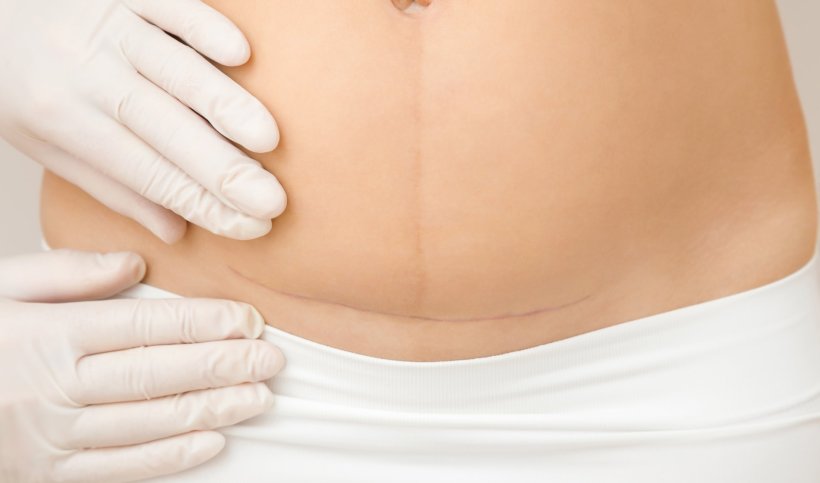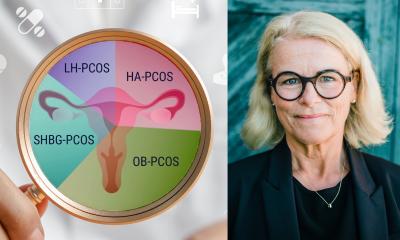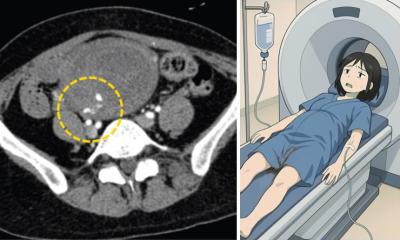
Image source: Adobe Stock/fotoduets
News • Postpartum hemorrhage
Two easy fixes to reduce bleeding after C-section
Two simple solutions could help prevent severe bleeding (postpartum hemorrhage) after cesarean delivery, suggests research presented at the Anesthesiology 2023 annual meeting.
As the leading cause of maternal mortality in the US at the time of birth, postpartum hemorrhage is more common after cesarean deliveries than vaginal births. Both solutions help address uterine atony, which causes up to 80% of postpartum hemorrhage. Uterine atony is when, after delivery, the uterus remains soft and weak instead of contracting to compress the blood vessels that had been attached to the placenta. One solution involves infusing a medication to help the uterus contract after delivery. The other is an early warning system that prompts an assessment of how well the uterus is contracting after delivery to quickly alert the health care team when a woman is at risk for heavy bleeding and requires treatment.
“Bleeding during a cesarean delivery is a high-stakes, high-risk situation, and when it occurs, the obstetrics and anesthesia teams must work together to rapidly prevent and treat ongoing bleeding,” said James Xie, M.D., lead author of the early warning study and clinical assistant professor of anesthesiology, perioperative and pain medicine at Stanford University, California. “Studies have shown that rapid recognition and management are essential to improving outcomes.”
“The ultimate goal is to decrease maternal mortality and morbidity,” said Jessica Ansari, M.D., M.S., senior author for both studies and an obstetric anesthesiologist at Stanford University. “Recent estimates show a new mother dies of postpartum hemorrhage about every seven minutes, mostly in low-resource settings. If our findings can be confirmed in larger studies, it could transform the way we prevent and treat postpartum hemorrhage.”
This is the first time an infusion of calcium chloride has been studied as a possible treatment to help the uterus contract after cesarean delivery and decrease bleeding in those patients.
Alla Yarmosh
The researchers looked at using calcium chloride to help prevent bleeding in women with uterine atony because it is inexpensive, simple, safe and doesn’t require refrigeration like other treatments. Consequently, it can be used even in very low-resource settings, where women are much more likely to die from pregnancy-related bleeding. They found that calcium chloride reduced the amount of bleeding that patients experienced during their cesarean delivery by nearly a measuring cup (more than 200 ml).
The double-blind, randomized, controlled trial included 120 women who required a cesarean delivery after labor with an oxytocin infusion (which increases contraction of the uterus during labor), placing them at much higher risk of suffering from uterine atony and bleeding after the birth. Researchers randomly assigned 60 women to receive 1-gram infusions of calcium chloride and 60 women to receive a placebo. The infusion was administered slowly after the baby was delivered, and the study was blinded, meaning the patients and their doctors were unaware if they received calcium or the placebo. Of the women who received the placebo, 57% had postpartum hemorrhage and 15% required a blood transfusion, while 40% of those who received calcium chloride had postpartum hemorrhage and 8.3% required a blood transfusion.
The last Food and Drug Administration-approved drug to treat uterine atony was released in 1979. “New treatments to treat uterine atony are desperately needed,” said Alla Yarmosh, M.D., lead author of the study and clinical assistant professor in anesthesiology at Stanford University. “This is the first time an infusion of calcium chloride has been studied as a possible treatment to help the uterus contract after cesarean delivery and decrease bleeding in those patients. If our findings are confirmed by larger studies, it would be an easy technique for institutions to implement since anesthesiologists run infusions during surgery regularly.”
For the early warning study, researchers created an alert that pops up on the anesthesiologist’s electronic health record (EHR) module two minutes after the baby is marked as delivered, asking for a uterine score from 1-10. The anesthesiologist prompts the obstetrician to assess the uterine tone (by manually feeling it) and provide the score, which the anesthesiologist records. Scores of 6 or lower mean the uterus is not contracting well and the woman is at higher risk for postpartum hemorrhage.
This real-time communication that a woman is at risk alerts the treatment team, which can then determine the best solution. Physicians can give the woman medications to help the uterus contract better or put stitches or balloons in the uterus to compress the vessels to prevent further bleeding, said Dr. Xie. They also can anticipate and prepare for hemorrhage, which can be addressed by giving the woman medications to stabilize blood clotting or ordering blood products to be ready for transfusion.
The study assessed more than 1,000 consecutive cesarean deliveries by 70 different obstetricians over eight months. The uterine tone score was assessed three times for each patient and was documented reliably; two minutes after delivery (recorded 87% of the time), seven minutes after delivery (recorded 97% of the time), and 12 minutes after delivery (recorded 98% of the time). At 12 minutes, 179 women (18%) had scores of 6 or lower, meaning they were at higher risk for severe bleeding. Of those with scores of 6 or lower, 77% experienced hemorrhage, 46% experienced major hemorrhage and 25% needed a blood transfusion.
“Our research shows that this simple scoring system is a very meaningful, easy way to ensure that if the uterus is contracting poorly and there is a risk of hemorrhage, it will be recognized by their health care team early,” said Dr. Xie. “In the future we can further refine models that predict when women are at high risk of bleeding around the time of delivery to help physicians be prepared to manage bleeding caused by poor uterine tone.”
The United States has the highest maternal mortality rate among high-income countries.
Source: American Society of Anesthesiologists
21.10.2023





